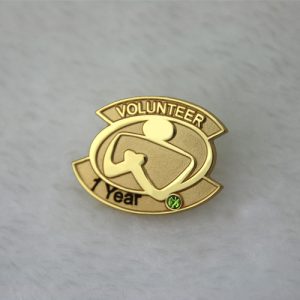If you are a pin designer, or simple a collector so here a few tips for you!
How to discriminate Lapel Pins?
In the collection market around world , counterfeit Pins are showing an increasing trend.
Especially, the use of advanced technology imitation of the rare pin like the fickle! this is making difficult to distinguish between true and false.
Imitation fake is more common.
Identify the authenticity of lapel pins and then … what about if we learn from traditional Chinese medicine
“observe, hear, ask, cut” four methods for “diagnosis.”
- First: observe
That is, the surface of the pin to observe the natural pulp.
Usually it correspond to the enamel coating, the paint effect, the electroplating gloss, background patterns and text features and so much more!
So, the Genuine lapel pin enamel color, normally are bright paint and with excellent adhesion and high temperature.
Another important thing is, they are corrosion-resistant and much other characteristics.
Fake pin is painted with paint that its natural quick-drying will be curing its lamination and, will have traces in the paint that normally will give the color gloss !
And sometimes, is too poor and too bright.
On the Lapel pin’ s surface the plating depth, the brightness and thickness are important basis to distinguish the authenticity.
- Second: Hear
Hearing expert analysis or getting knowledge from books and periodicals.
Consulting to an expert collectors, or maybe, compared with the same badge, and so on.
Collectors can learn about knowledge and quotations from professional website, which will be helpful for improving the screening ability.
- Third: Ask
Refers to the ins and outs of insignia, historical background, design modeling, aesthetic principles, process methods, production processes.
Each lapel pin, especially the early badge production and distribution, are based on historical events.
Except for a few hand-made pins, the process of the mechanism pin is roughly as follows: Designing drawings – Opening molds – Repairing molds – Selecting blanks – Stamping blanks – Plating – Enamels (or paint)
– Upper pins –
Although, the badge varieties vary widely but, its technology methods are similar.
- Fourth: Cut
With Cut we just refer about the lapel pin ‘s material! and its density identification.
One of the most important process like the stamping will be definitely the Badge making process!
The larger the tonnage of stamping machine, the higher the density of the badge will be;
The higher and the smoother the smoothness and the finish of the pin on both the front and the back.
Also, most of the early pin are made of copper, due to low hardness this plastic deformation is strong,
The use of steel mold by gravity stamping, badges are particularly prominent on the back indentation, the inscription is particularly clear.
Forged badges with silicon mold, although the appearance is very similar, but its texture is essentially different from the real thing.
Well, in conclusion, I hope these knowledge can help you identify badges, although our company, GS-JJ have a lot of high-quality Lapel Pins.
If you have a collection, perhaps , you can look at our antique badge.
If you like, you can login to our website.



